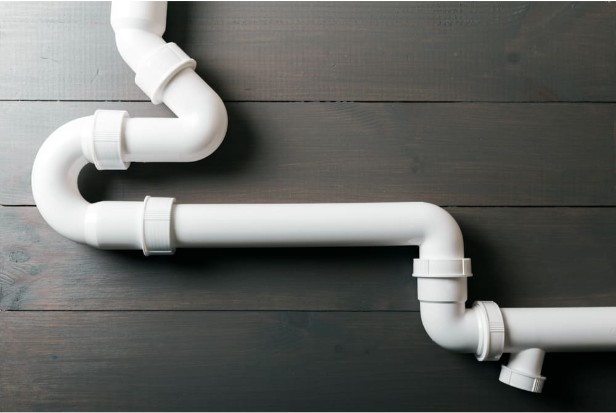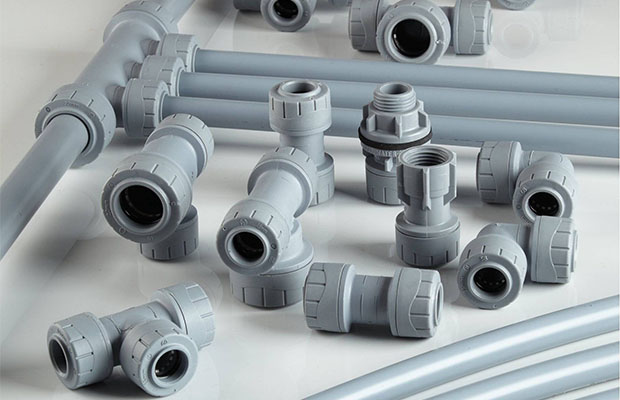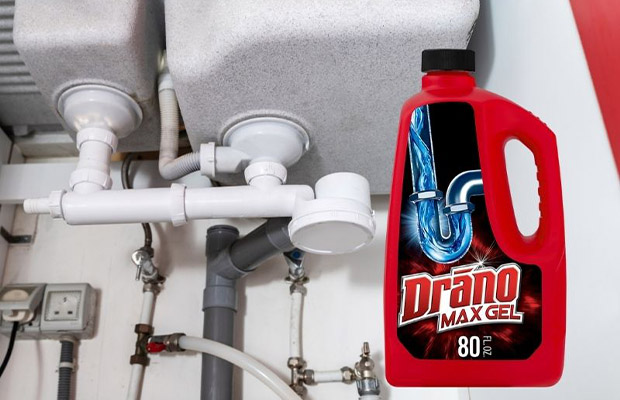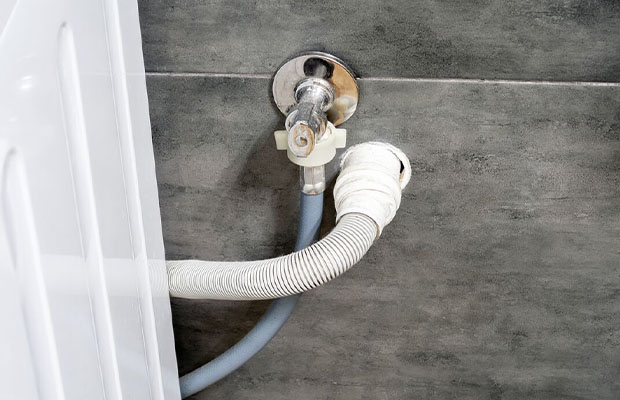
You recently purchased a washing machine for your laundry and discovered that you should vent the drain pipe.
Now you want to do this, but do you know how to vent a washing machine drain pipe? You will need to install a standpipe that connects to the Once the P trap is engaged, the standpipe will join the drain.
You can read more about other related topics and find out how to vent the washing machine drain pipe in this article. Continue reading!
Table of Contents
How Does A Vent Work?
From one location to another, air can travel through a vent. It prevents laundry odor from permeating the laundry room by directing liquid particle evaporation outside.
The flow of water from the washing machine can be changed to go through the sewer system by venting a drain pipe. To prevent water from overflowing, home builders install a vent.
Is Washing Machine Required To Have A Vent?
Ventilation can reduce moisture and odor in the laundry room, yes. Additionally, installing a vent lessens the need to clean the area once the laundry is done. Below are the two main problems you might experience if you don’t vent the washing machine drain pipe:
The Area Will Flood
Ventilation is required to prevent flooding from water. You’ll have to pour the water directly into the main drainage system that leads to the sewer if there isn’t a vent.
Every time you do laundry, you don’t want the inconvenience of soaking the floor. The floor may require subsequent mopping and drying. You can prevent this inconvenience by venting.
The Drain Will Emit A Foul Odor
If the pipes aren’t vented, the drain may discharge an unpleasant smell that will remain trapped in the space. Due to the heat from the sun, wastewater will evaporation and exit. If the vapor cannot escape, it will rise once more to the area where the washing machine is.
What Are Signs Of Poor Drain Pipe Venting?
Sewer gas smells coming from your pipes are the most typical sign of inadequate drain pipe venting.
If the water in your washing machine isn’t draining, the drain pipe may be blocked. Additionally, it’s a remote possibility that the drain line isn’t vented, which would slow the water’s drainage. However, it is much more likely that the drain is clogged or that it is undersized for the new washing machines with high-discharge pumps.
Gurgling
When water is running in another area of the house because of poor venting, you might hear gurgling coming from one drain. The variations in air pressure in the line are to blame for this.
Foul Smells
Protecting the two inches of water that are contained in the p trap is the main purpose of venting. Your home has a drain trap under each sink. These traps always have about 2 inches of water in them to stop bad odors from returning to the living area. In homes with inadequate plumbing venting, water running in one area of the home will create a low pressure that will completely fill the other drain traps.
Water Backing Up In The Kitchen Sink
When the washing machine drains and water enters the kitchen sink, there may be an issue with the plumbing system’s ventilation, which could be the cause of the poor drainage.
Slow Draining
In severe situations, a lack of venting could make plumbing drain slowly. When running another faucet, a toilet may lose water or refill slowly to a low point.) Theoretically, flooding could result from a washing machine drain vent being missing with the new, high-discharge washers. In most cases, slow draining is caused by a clog rather than a bad venting problem.
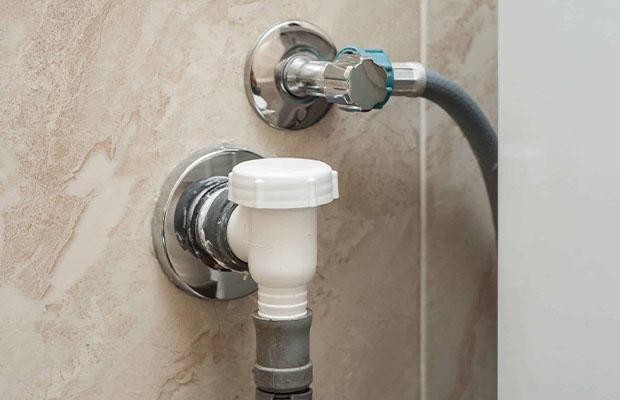
Tools Required To Vent The Washing Machine Drain
For a washing machine drain to function successfully, the following is typically required:
- Standpipe-horizontal pipe from the drain to the washer that is angled 1/4 inch per foot toward the drain.
- P-trap-necessary to ensure the water doesn’t stand still. makes a seal so that sewer gases cannot enter your home.
- Venting standpipe-this is a straight pipe (usually vented through the roof) to vent sewer gases.
- Cheater valves-creates negative pressure by opening up a valve to allow air into the line while water is flowing. Not permitted everywhere, so before installing, make sure to check the local building code.
How To Vent A Washing Machine Drain Pipe?
- The water inlet valve is located at the back of the washing machine. Use the red and blue cords to connect it.
- The filter should be fastened to the drain hose’s tip using waterproof adhesive tape. The washing machine typically comes with this.
- The drain hose’s tip should be bent into a U shape before being attached to the drain hole next to the water inlet valve. The main ventilation pipe then needs to be attached to the drain hole.
- To regulate the air pressure when draining, install an AAV, or air admittance valve, on the drainage pipe. Make sure it is four inches above the P-Trap level.
- Water must be added to the washing machine. To check it, turn it on and drain.
Venting its drain allows for easier, more convenient washing. You can read more about other related topics and find out how to vent the washing machine drain pipe in this article. Continue reading!
Does A Washing Machine Drain Hose Require Air?
If water is draining from your washing machine drain hose continuously, there may be a blockage in the hose.
If so, you will need to vent the hose to allow air to flow.
A few options exist for how to do this:
- Place the washing machine’s drain hose in a sink or bucket after removing it.
- To force air into the washing machine through the hose, use a plunger.
- Disconnect the washing machine’s drain hose, then blow into it. By doing so, air will be forced into the machine through the hose.
- To quickly disconnect the drain hose, run a little water through the washing machine.
- The rushing water will push air through the hose
Things To Remember When Venting The Washer Drain
There are a few considerations you should make when venting a washing machine drain pipe.
- The drain pipe should first be checked to see if it is installed and secured correctly. This will ensure that the pipe doesn’t come loose and cause any harm.
- Use a system that is compatible with your washing machine if you want to use a venting system properly. There are several different types of vents available.
- To clean the inside of the pipe after each use, always use a fresh cloth or sponge. By doing this, any accumulation of dirt and grime that might eventually cause a blockage will be avoided.
- The pipe may eventually be damaged if you pour harsh chemicals down the drain.
- Make sure to regularly inspect the vent for any obstructions or damage. This will not only help to prevent leaks and flooding, but it will also help to protect the machine from any damage.
- Avoid Overuse Of Detergent.
Do’s And Don’ts
When you vent the washer’s drain pipe, keep these recommendations in mind. They are able to stop problems before they start:
Do’s:
- In order to avoid clogging, clean the washer’s filter screen. It typically sits where the drainage hose is attached.
- Put the washing machine on a plank that is at least three inches off the ground. When the floor is wet, this will aid in preventing electric shocks.
- Earlier to doing your laundry, check the pipes for any potential damage.
- To prevent kids from disconnecting the hoses, frame or box the valves.
Don’ts:
- If the vent is damaged, refrain from draining the water.
- Use matching pipe sizes only. A flood can be caused by pipes that are too wide or too narrow. The drainage pipe should ideally be 3 to 6 inches wide.
- To prevent serious issues, don’t attempt them without professional assistance.
Overflow Prevention Of Washing Machine Drain
It is less likely that a washing machine drain will overflow if you take the following precautions:
- The excessive accumulation of lint inside the drainpipes can be avoided by using a garment bag or lint bag.
- The lint trap or filter of the washer should be inspected and cleaned.
- To ensure proper drainage, leave a space of at least 1/2 inch between the discharge hose and the drainpipe.
- So that soap residue doesn’t accumulate, use the right detergents.
- Consistently clean the drainpipe and hoses.
How Much Does It Cost?
Your needs will affect the price. You’re looking at a cost of $230 to $1,140 if you only need to replace the drainpipe. Building permits range in price from $30 to $150. Finally, you might need to completely replace the washing machine. Depending on the size that you require, the price for a new machine could range from $350 to $1,200.
When Should I Call A Professional?
You should call a qualified plumber if your washing machine is making noises, smells bad, or is leaking water. You can frequently save money if you take care of any problems right away. Plumbing modifications or drain line cleaning may be necessary for the washing machine. The best course of action is to call a licensed plumber because fixing this can be challenging for the average homeowner.
Conclusion
To avoid flooding and other annoyances, it is a good idea to vent the washing machine drain pipe. To maximize the vent’s efficiency, always strive for a high-quality installation.
Additionally, if you ever have any queries or worries, make sure to speak with a qualified plumber or other knowledgeable people before moving forward.
With that said, we sincerely hope that this article has been valuable in providing you with some insightful knowledge.
Read More: How To Unfreeze Pipes?

